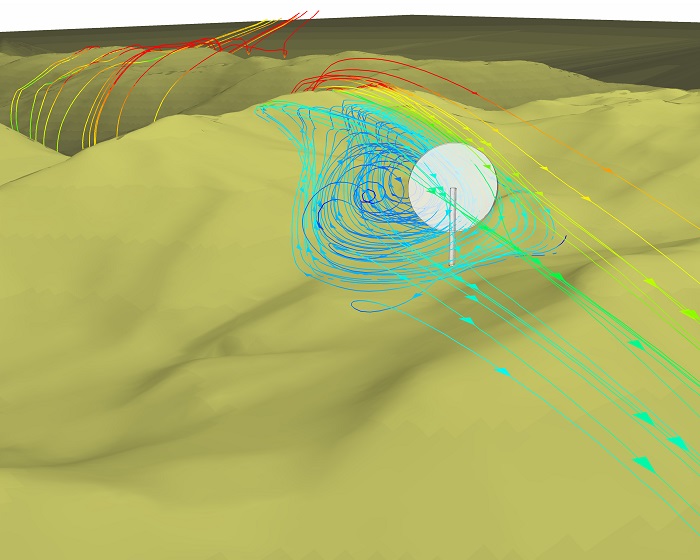DNV GL (uniting Garrad Hassan, KEMA, DNV, GL Renewables Certification), a global energy advisory and testing authority, has announced that it has achieved the highest score in a wind flow modeling blind test organized by E.ON, a power and gas company. The blind test challenged six participants, including some of the most reputable consultancies in the global wind industry, to accurately predict the wind regime at eight wind farm sites.
The most attractive wind farm sites are often found at locations where the wind conditions are difficult to quantify. Examples include sites affected by atmospheric stability, exposed and hilly sites, as well as wind farms in or near forests. An ongoing challenge for the wind industry is to accurately predict the variation of wind speed across such “complex” sites to determine a credible estimate for the energy output of the project in question. If these predictions can be made more accurately, even by a relatively small amount, it leads to a direct improvement in the financing conditions available to project developers – thereby reducing the cost of electricity delivered to the grid and improving returns.

DNV GL has been developing improved methods for predicting wind flow on complex sites for more than two decades and in recent years has developed cutting edge computation fluid dynamics or cfd techniques to further boost accuracy.
DNV GL has been developing improved methods for predicting wind flow on complex sites for more than two decades and in recent years has developed cutting edge computation fluid dynamics techniques to boost accuracy further.
E.ON’s blind test comprised of wind flow modeling for eight wind-farm sites located across four countries: USA, UK, Spain, and Sweden. Each location posed varying geographical and climatic challenges which add complexity to the modeling. This included atmospheric stability, forestry, and complex terrains. Participants were asked to make their best predictions of the wind conditions at locations corresponding to existing measurement masts at each site. The predictions were then compared to the actual measurements; the smaller the difference, the higher the ranking in the blind test.
“Enabling greater accuracy in wind speed predictions helps reduce financial risk. We’d like to congratulate DNV GL on achieving the best results across the sites relative to other models tested. This outcome is as much about knowledge of atmospheric flow characteristics as accuracy in computer modeling,” says Matthew Meyers, Head of Wind Yield Assessment at E.ON.
The DNV GL CFD team has analyzed hundreds of wind farm sites to date. “While our wind flow models are advanced, it is the expertise of our team which sets us apart,” says Jean-François Corbett, Head of CFD (wind) at DNV GL. “Anyone can produce a CFD-predicted wind speed, but in our view, modeled physics must be combined with qualified engineering judgment to produce meaningful results. This requires years of experience and learning from real data and real-world sites.”
DNV GL
www.dnvgl.com/energy.
Filed Under: News





